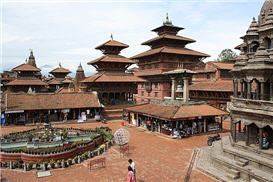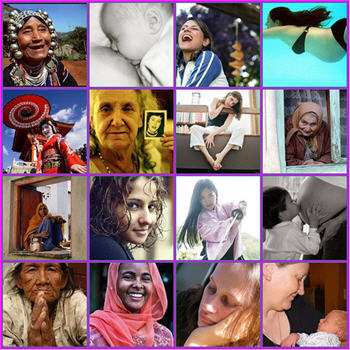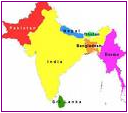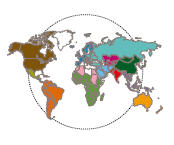The gorgeous historic Royal Square of Patan Durbar is about to host
literary jatra for the very first time. The World Heritage site, dotted with pagoda-like structures, is the stunning location for the festival which is sponsored by Himal magazine and will bring together writers and poets for workshops, reading and discussion. Billed as a festival of both national and international writers, some disaapointingly point out there are no representative writers/poets from Nepal’s indigenous languages (other than Newari). If you need an excuse to visit the area, the maybe this is it: September 16th-18th 2011. Festivals already take place in Bhutan, Sri Lanka and Pakistan, and it’s beginning to look like visitors to South Asia should be able to catch a literary gathering throughout the year
International Women’s Day is a global day to celebrate the economic, political and social achievements of women past, present and future. The first IWD was launched by a woman named Clara Zetkin (German) in 1911. In some places like China, Russia, Vietnam and Bulgaria, IWD is a national holiday. However, the plight of women and the hardship they still face in many countries is highlighted by many organisations – see below.

Global issues facing women include:
Females in developing countries on average carry 20 litres of water per day over 6 km
Globally, women account for the majority of people aged over 60 and over 80
Pregnant women in Africa are 180 times more likely to die than in Western Europe
530,000 women die in pregnancy or childbirth each year
Of 1.2 billion people living in poverty worldwide, 70% are women
80% of the world’s 27 million refugees are women
Women own around only 1% of the world’s land
AIDS sees women’s average life expectancy reduced to 43 in Uganda and Zambia
Women are 2/3 of the 1 billion+ illiterate adults who have no access to basic education
Read Fakhria Ibrahimi’s account of the plight of women in Afghanisaton
Official International Women’s Day site – see how you can help bring about change in the world.
Photograph by web/graphic designer Melanie Cook, used with permission. Thank you!
The coming of Spring is celebrated in the Hindu religion over 
several days during the Festival of Colours – called Holi. Holi is a time for fun rather than religious observance. It is the most vibrant Indian festival, when distinctions of caste, class, age or gender are set to one side. The practical jokes and games that surround Holi are thought to arise from the belief that the origin of the festival lies with Krishna who was very mischievous as a young boy and threw coloured water over the gopis (milkmaids) with whom he is believed to have grown up.
Read more.. »
I was recently sent an email with some amusing photos
comparing overcrowded trains in India and Pakistan (as pictured on the right) with slick, modern trains in other parts of the world. I began to wonder just how stereotypical were these pictures and whether any of them depicted a true-to-life view of train travel around the world. My investigation led to some interesting blogs and some stunning pictures.
Read more.. »
This is a Mahayana Buddhist festival which in India is known as 
Parinirvana. (Celebrated by some Buddhists on 15th Febraury). This festival marks the death of Buddha and celebrates when, at the age of 80, he finally attained nirvana (enlightenment) and was released from the cycle of death and rebirth: freedom from physical existence and its sufferings. Mahayana or Theravada Buddhists meditate or visit temples or monasteries, and the day is treated as a social occasion. Nirvana Day celebrations vary throughout the world but usually include food preparation and the exchange of gifts such as money, household goods, or clothing.
Read more.. »
In South Asia the countries have a common colonial heritage 
and many of the prevailing attitudes derive from that heritage. The richer, more educated people are very elitist and the poorer classes are very conscious of knowing their place in the multilayered social structure. They accept bribery as a part of normal exchange and view it as commission, not corruption. All these attitudes impact greatly the way business is carried out, with whom, and how things get done.
India is vast with many different cultures, religions and cultures. Referred to as one of the BRIC countries (Brazil, Russia, India, China) it has a fast-growing developing economy. Vast numbers of highly educated, numerate, English-speaking young people have supplied the necessary workforce for a growing high-tech knowledge economy. The modern India, with its Bollywood films, sits firmly by the side of its third world old India.
So far in this section you’ll find the Top Ten Tips for doing business in four countries of South Asia, along with opening times, holiday dates and festivities. These are: India, Pakistan, Sri Lanka, Myanmar (Burma).
Read more.. »
Just to add emphasis that India really is one of the BRIC counties, Forbes, the prestigeous business publication, is now launching in India having teamed up with Network18, a leading Indian media group. Forbes India is the first Indian edition of any foreign news or business publication and is set to become the most influential business brand. So much so that it is expected to redefine in India how wealth creation will be understood, how business leaders will choose to lead, and even how business will be done. As someone working in INTERCULTURAL COMMUNICATION and INTERNATIONAL BUSINESS PRACTICES, I would certainly be interested in reading it!
In the inaugural issue, Forbes India features Lakshmi Mittal, the man who changed the face of the steel industry, and became the fourth richest man in the world. But now, for the first time in three decades, he faces his sternest test. The global slowdown has made his company post quarterly losses for the first time ever last year, and then another negative balance sheet in the next quarter. He’s not alone; the steel industry worldwide is going through a crisis. Everyone is looking to Mittal to show the way out. The inaugural issue of Forbes India gives the most comprehensive look yet at this driven, determined man.
To further leverage its brand, a new half-hour weekly program entitled the Forbes India show will be aired on TV. This will discuss opinions on issues and policies that impact the economy, and will also broadcast a wide array of business content ranging from leadership, economy and finance to international business and entrepreneurship.
In a recent documentary, Newt Gingrich states that American children are falling behind many other nations’ children in respect of their academic prowess. He argues that they compare most unfavourably with Chinese and Indian children. To add weight to this argument, a recent McKinsey report emphasises that the lagging performance of America’s school pupils, particularly its poor and minority children, is wreaking more devastation on the economy than the current credit crunch and recession. American children, it seesms, are ill-equipped to compete and perform poorly in international educational test.
So, what seems to be the cause of this state of affairs? American academics put it down to ‘the summer learning loss’ over the long summer holidays and argue its exacerbating social inequalities. In addition to the longer summer holidays that the children receive, American kids seem to work fewer days in the year, have a shorter school day and only about an hour’s homework a night. Compared to European and Asian schedules, it appears that American kids lose out on 180 days of school (an entire year) over the course of their schooling.








 Hello, I'm Deborah Swallow and, for the last fifteen years, I've worked in over thirty countries addressing the complexities of people working internationally across multiple cultures, so individuals and organisations alike can gain an authentic competitive edge and win in international markets.
Hello, I'm Deborah Swallow and, for the last fifteen years, I've worked in over thirty countries addressing the complexities of people working internationally across multiple cultures, so individuals and organisations alike can gain an authentic competitive edge and win in international markets. 